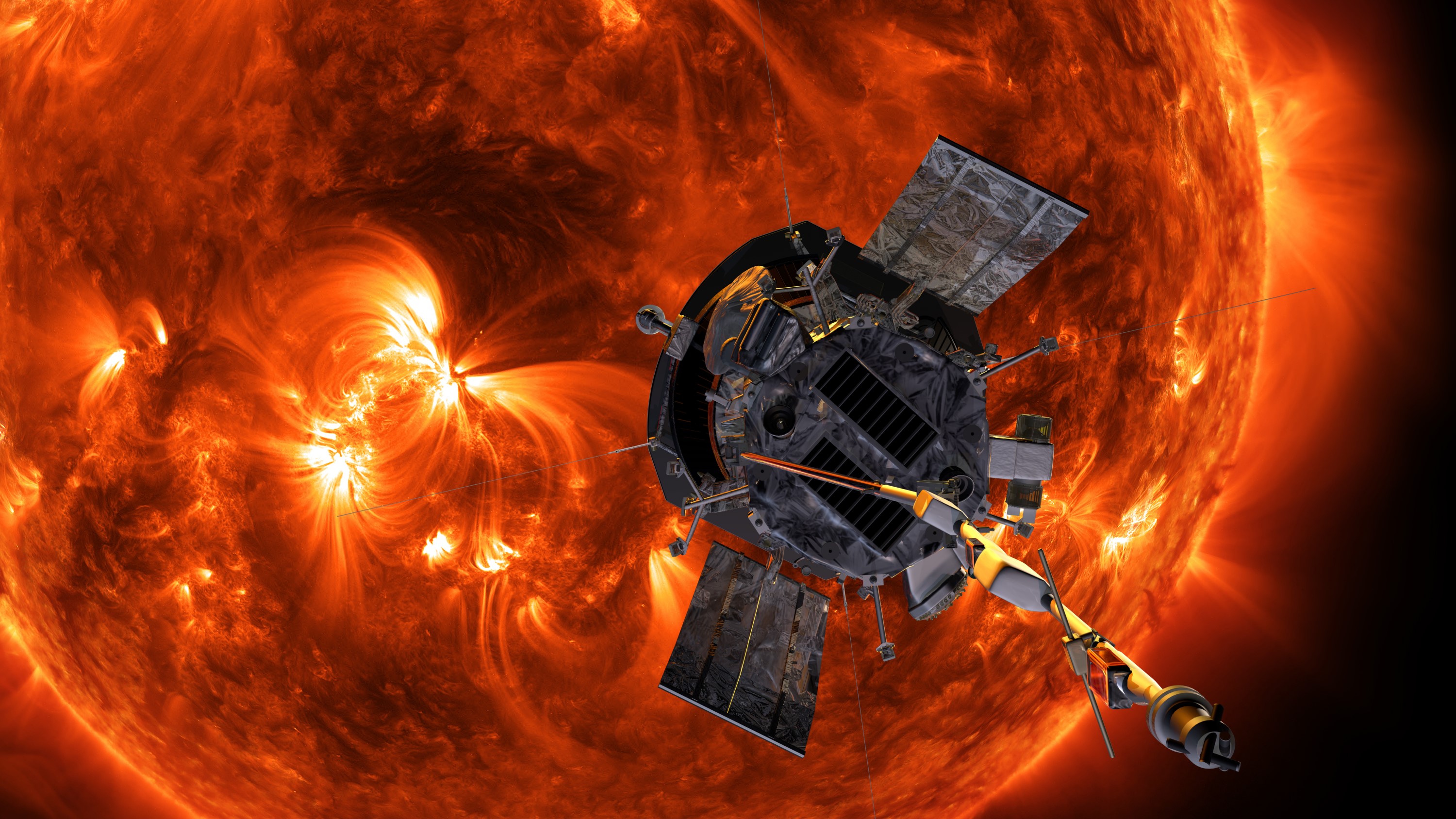NASA's superfast Parker Solar Probe just broke it own speed record at the sun
The Parker Solar Probe just set another speed and distance mark.

A NASA sun-gazing spacecraft broke its own speed and distance records Sunday (Nov. 21) as it moved closer to our star.
The Parker Solar Probe reached a top speed of 101 miles (163 kilometers) per second during its 10th close solar flyby on Sunday, which translates to a dizzying 364,621 mph (586,000 kph), NASA officials said.
The high speed comes as Parker braves the heat to get closer to the sun, on a quest to better understand how our star generates "space weather" that affects everything from satellite operations to astronaut safety to auroras. And Parker just set a closest-distance record, too, getting a mere 5.3 million miles (8.5 million km) from the sun's surface, which is known as the photosphere.
NASA didn't publish exactly what records Parker just beat, but a glance at the last close flyby shows us the most likely numbers. On Aug. 9, Parker was roughly 6.5 million miles (10.4 million km) away from the sun's surface and hit a top speed of about 330,000 mph (532,000 kph).
It’s #SunDay! ☀️ And #ParkerSolarProbe is making the most of it. 😉 Today Parker is breaking its own records, completing its closest and fastest pass of the Sun yet.More: https://t.co/eGdheuvXFT pic.twitter.com/wiVJ9BxWAJNovember 21, 2021
Getting so close to the sun exposes Parker to extreme temperatures, which engineers prepared for with a unique heat shield (involving reflective paint, a carbon-foam core and panels of carbon-carbon composite) affectionately dubbed a "giant Frisbee".
Engineers are getting surprised by the amount of dust near the sun, however. That said, the spacecraft is robust in dealing with dust, even if modeling work performed before launch didn't account for the amount the probe is seeing, NASA officials said in a statement.
"We designed materials and components that survive hypervelocity dust impacts and the effects of the even smaller particles created in these impacts," Jim Kinnison, Parker Solar Probe mission systems engineer at the Johns Hopkins University Applied Physics Laboratory, in the statement.
Get the Space.com Newsletter
Breaking space news, the latest updates on rocket launches, skywatching events and more!
"We modeled the makeup and effects of the dust environment," Kinnison added, "tested how materials react to the dust particles, and installed fault-tolerant onboard systems that are keeping Parker Solar Probe safe in this unexplored region."
The mission team expects to keep breaking speed and distance records, especially after Parker finishes two Venus flybys in August 2023 and November 2024 to pick up more speed. By December 2024, Parker should get as close as 4 million miles (6.2 million kilometers) to the solar surface, with speeds of more than 430,000 mph (690,000 kph.)
Follow Elizabeth Howell on Twitter @howellspace. Follow us on Twitter @Spacedotcom and on Facebook.
Join our Space Forums to keep talking space on the latest missions, night sky and more! And if you have a news tip, correction or comment, let us know at: community@space.com.

Elizabeth Howell (she/her), Ph.D., was a staff writer in the spaceflight channel between 2022 and 2024 specializing in Canadian space news. She was contributing writer for Space.com for 10 years from 2012 to 2024. Elizabeth's reporting includes multiple exclusives with the White House, leading world coverage about a lost-and-found space tomato on the International Space Station, witnessing five human spaceflight launches on two continents, flying parabolic, working inside a spacesuit, and participating in a simulated Mars mission. Her latest book, "Why Am I Taller?" (ECW Press, 2022) is co-written with astronaut Dave Williams.









